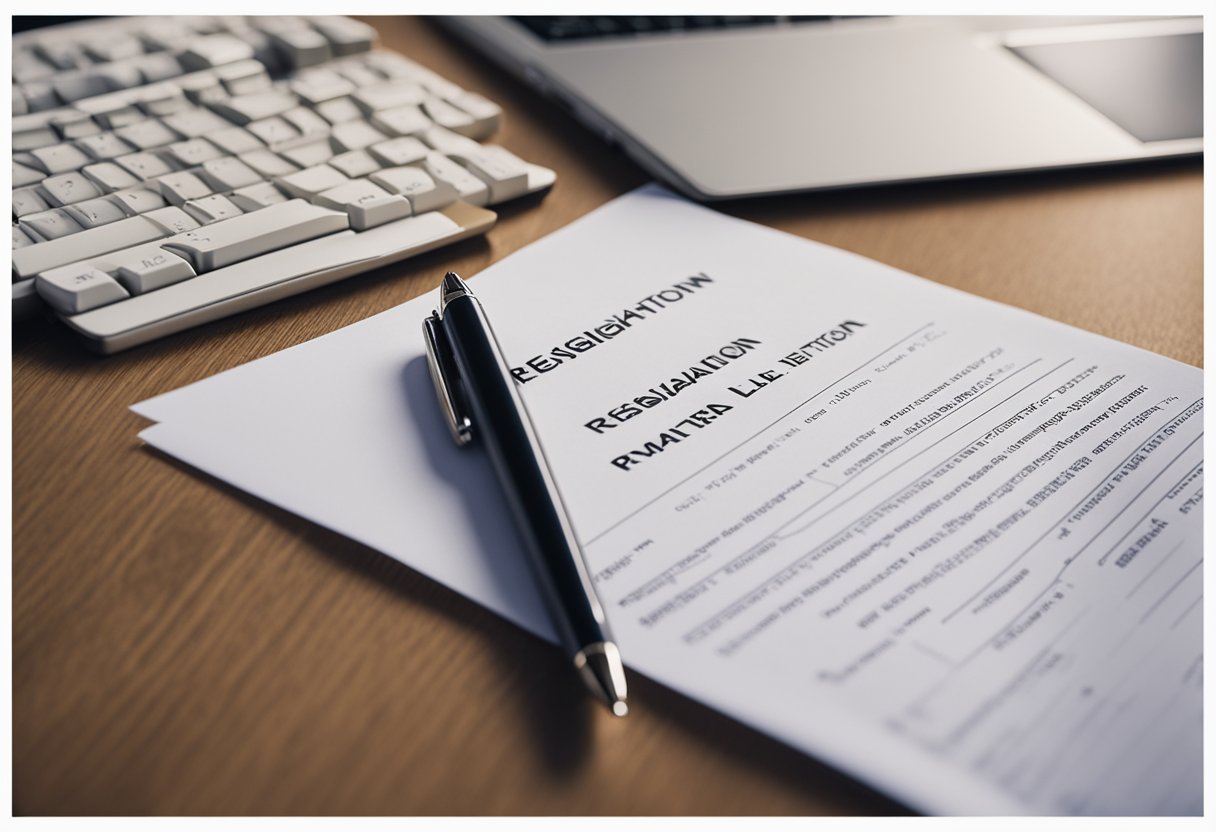How to Write a Resignation Letter: Key Elements for a Professional Goodbye
Writing a resignation letter is a significant step in one’s professional journey. Whether moving on to a new opportunity or leaving a current position for personal reasons, it's important to handle the situation with professionalism. A well-crafted resignation letter conveys your intentions clearly and preserves the relationships you've built within the organization. It acts as a formal notification to your employer and can aid in a smooth transition.

Preparing your resignation letter begins with understanding the essential elements that should be included. It's crucial to be concise and to the point, providing all necessary information without unnecessary details. Timing also plays a vital role in the resignation process. Offer enough notice to ensure business continuity and to demonstrate respect for your employer's time and resources.
Key Takeaways
- A resignation letter formally communicates the intent to leave a position.
- Conciseness and clarity are key when drafting a resignation letter.
- Proper timing and notice period are important for a smooth transition.
Preparing Your Resignation Letter

Before drafting a resignation letter, individuals should consider their motives, timing, and the manner of their departure. Each step in this preparation ensures a professional approach and a smooth transition.
Reflect on Your Decision
One must thoroughly assess their reasons for leaving a job to ensure it aligns with their career goals and personal ethics. It is crucial to be certain in one's decision to resign before moving forward.
Choose the Right Time
Timing is essential in resignation. Employees should aim to choose a time that minimizes disruption to their team and employer. They should consider company cycles and personal contractual obligations such as providing notice per company policy.
Discuss with Management
Before announcing the resignation broadly, one-on-one conversations with direct supervisors or managers are recommended. This discussion is a courtesy that demonstrates respect and allows for a potential smooth transition plan.
Writing Your Resignation Letter

When crafting a resignation letter, it's important to convey your intentions professionally, provide essential details, and maintain a positive tone throughout the message.
Start with a Formal Greeting
One should address the letter to the appropriate party, usually their direct supervisor or the HR manager. Use a formal salutation such as "Dear [Name]," to begin the letter respectfully.
State Your Intention
Clearly state the purpose of the letter. The first sentence should directly inform the recipient of your decision: "I am writing to formally resign from my position at [Company Name]."
Provide Notice Period
Immediately after stating the intention, mention the last working day by providing a notice period in line with the company's policy. For example: "As per the terms of my employment contract, I am providing a [notice period, e.g., two weeks'] notice. My last day of employment will be [Date]."
Express Gratitude
A brief expression of thanks for the opportunities provided by the company will help maintain a positive relationship. One might write, "I am grateful for the opportunities to develop professionally and personally during my time with [Company Name]."
Offer Assistance During Transition
Offer to help with the transition process. This could include training a replacement or handing over ongoing projects. For instance: "I am willing to assist in the transition process to ensure a smooth handover of my responsibilities."
Include a Conclusion
End the letter with a cordial closing statement, such as "Thank you for your understanding and support," followed by a valediction, "Sincerely, [Your Name]."
Frequently Asked Questions
In crafting a resignation letter, individuals seek clarity on the essential elements to include, the appropriateness of email format, and best practices tailored to specific professions, such as teaching. The following frequently asked questions address these concerns with succinct guidance.
What are the essential elements to include in a simple resignation letter?
A simple resignation letter should include a declaration of intent to resign, the effective date of resignation, a brief thank you to the employer, and an offer to assist with the transition.
Can you provide guidance on writing a resignation email?
When writing a resignation email, one should treat it with the same formality as a letter. This includes a clear subject line, a formal greeting, the statement of resignation, final working date, gratitude, and an offer to help with handing over responsibilities.
What format should a short resignation letter follow?
A short resignation letter should follow a formal business letter format, starting with contact information, date, employer's contact information, a formal salutation, the body of the letter, a complimentary close, and the writer's signature.
What are the best practices for writing a resignation letter for teachers?
Teachers should express gratitude for the opportunity, mention the last day of teaching, and offer to assist with finding a replacement or transitioning their responsibilities to ensure minimal disruption for students.
How should an employee structure a formal resignation letter?
A formal resignation letter should begin with the employee's contact information, date, employer's address, a formal greeting, a clear statement of resignation, the effective resignation date, an expression of gratitude, any details relevant to the departure, a courteous closing, and the employee's signature.
What are key points to include in a resignation letter when providing a reason for leaving?
When providing a reason for leaving, it is important to be polite and professional, briefly explain the reason without going into excessive detail, and maintain a positive tone to leave on good terms with the employer.

Get a higher quality resume format
Our Resume Builder ensures best practices, logic, formatting standards and job matching opportunities from thousands of job boards and portals around the world.
By clicking Start Your Resume, Your are agree to our Terms of use and Privacy Policy
 India's
premier resume service
India's
premier resume service






